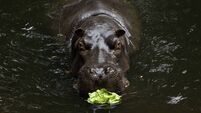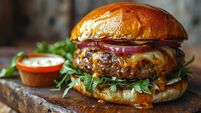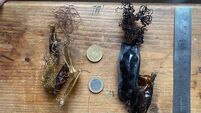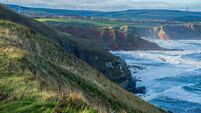Long journeys and deep dives no bother for adventurous grey seals
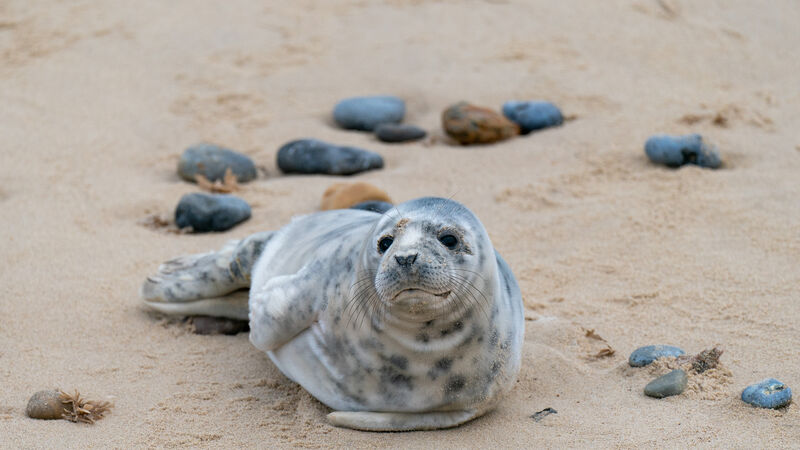
A grey seal pup: when their mother is feeding them, the pups gain more than a kilo a day in weight
Seals are intelligent animals. Their whiskered faces and big dark curious eyes are so endearing. Irish folklore is rich in tales of seals who are humans, and humans who are seals. The Selkie were seal women who could take off their sealskin and be human, then put their sealskin back on and dive away in to the water. Some Selkies would switch between being human by night and seal by day. Many of the folk tales about Selkies involve sailors, fishermen and lighthouse keepers falling in love with a Selkie and coercing her to stay on land. If they took her sealskin from her, they had the power to hold her back from returning to the water.
Some would marry and have a family, though she would always feel out of place and yearn for her life in the sea. Some of the stories inevitably entail both love and loss, and the Selkie would find her sealskin and return to her kin beneath the waves.
These folk stories are based on an understanding that seals are very much like us, despite the differences in their outward appearance. Instead of arms and legs they have flippers, their short limb bones are almost completely withdrawn into the bulk of their body. Their front flippers are like our hands, except with webbed skin between the digits that helps them to swim efficiently. Seals have a lot of blubber to insulate them against the cold seawater.

And, of course, another major similarity between seals and ourselves is that seals breastfeed their pups. From September to December, mothers haul themselves up onto remote beaches in undisturbed areas to give birth to a single pup each. Grey seal pups are adorable looking, with enormous dark eyes and a fluffy white coat. To help them survive the elements at this time of year, pups need to gain weight quickly. So seal milk is extremely rich in fat — cow milk typically contains about 4% fat, while seal milk has as much as 50% fat. While mothers are attending to their pups, they lose a lot of weight themselves, as pups gain more than a kilo a day in weight. After only three weeks, each pup weighs as much as 40kg.
Once the pups are big enough to survive alone, the mother heads away to mate again, leaving pups to fend for themselves. So during the winter months, pups can be seen on remote, quiet shores, all alone. If you see them, do stay well away. Pups are generally not in need of human intervention. These are wild animals which need their space from humans (and curious dogs). After a week or two all alone on the beach, gradually getting hungrier, the pups build up the courage to venture into the sea in the hope of finding something to eat.
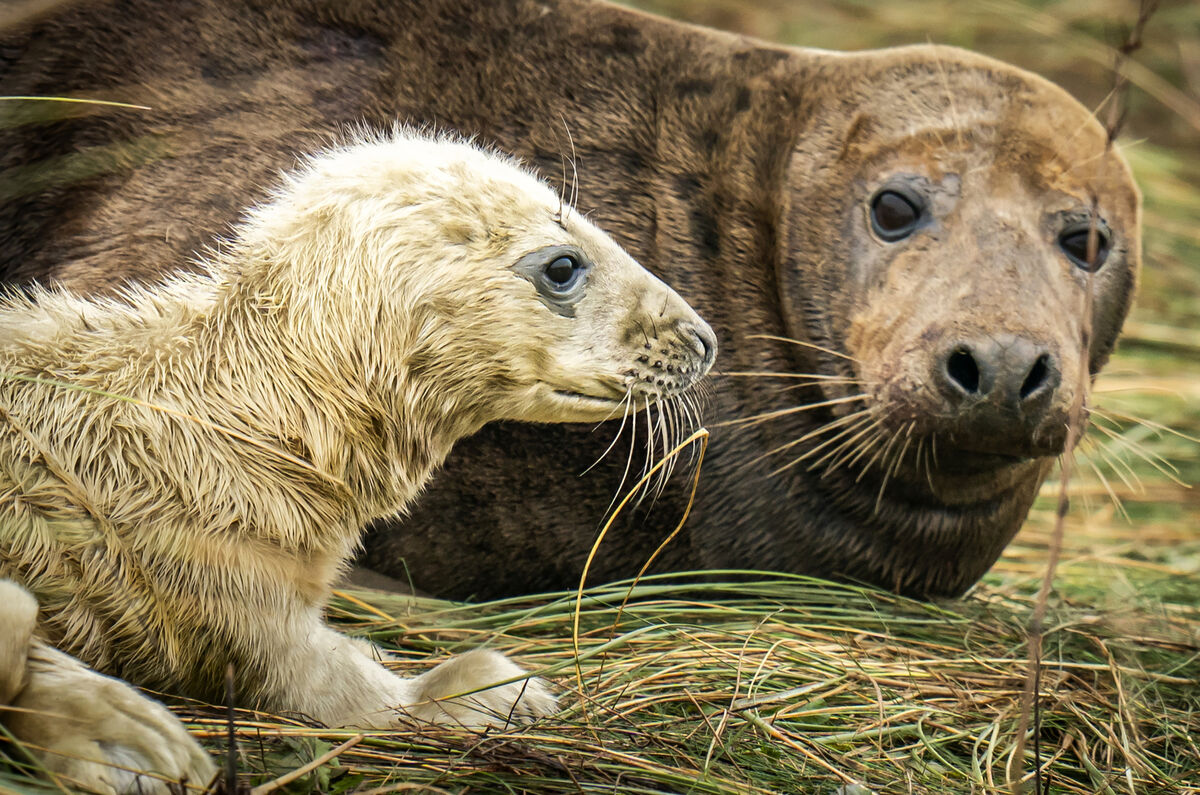
Soon they learn to catch a varied array of sea animals, including crab, lobster, sand eel, pollack, herring, mackerel, wrasse, salmon, and squid. But to stay underwater long enough to pursue and successfully catch crabs and fish, seals have evolved some amazing physiological adaptations. They are mammals after all.
For a start, their bodies contain a lot more blood than other mammals, about 75% more than an equivalent-sized human. As blood is what carries oxygen around the body, having more blood means having more oxygen in both their blood and their muscle tissue. Seals can also slow their heart rate to just a few beats per minute as they dive, using less oxygen and allowing them to stay submerged for a long time. Once they resurface, their heart rate accelerates for about 10 minutes, to pump back all the oxygen that has been depleted during the dive.
Seals have historically been persecuted because they eat fish and have been perceived to be ‘in competition' with human fishers. In the past, seals that spent autumn months on quiet offshore islands such as the Blasket Islands were shot and clubbed, illegally, in an attempt to reduce their population and the level of ‘interference’ with fisheries. The seals were blamed for declining fish stocks, with not a thought for overfishing and climate change — both devastating human-induced drivers of declining fish stocks. Of course, seals are clever animals, they learn quickly that a big net full of fish is an easy place for them to forage. That they cause damage to nets is a cause of resentment. But if we were managing things better, there would be plenty for everyone. Fortunately, there is little evidence that seals are still being shot or illegally culled, as attitudes are changing and severe penalties are in place.
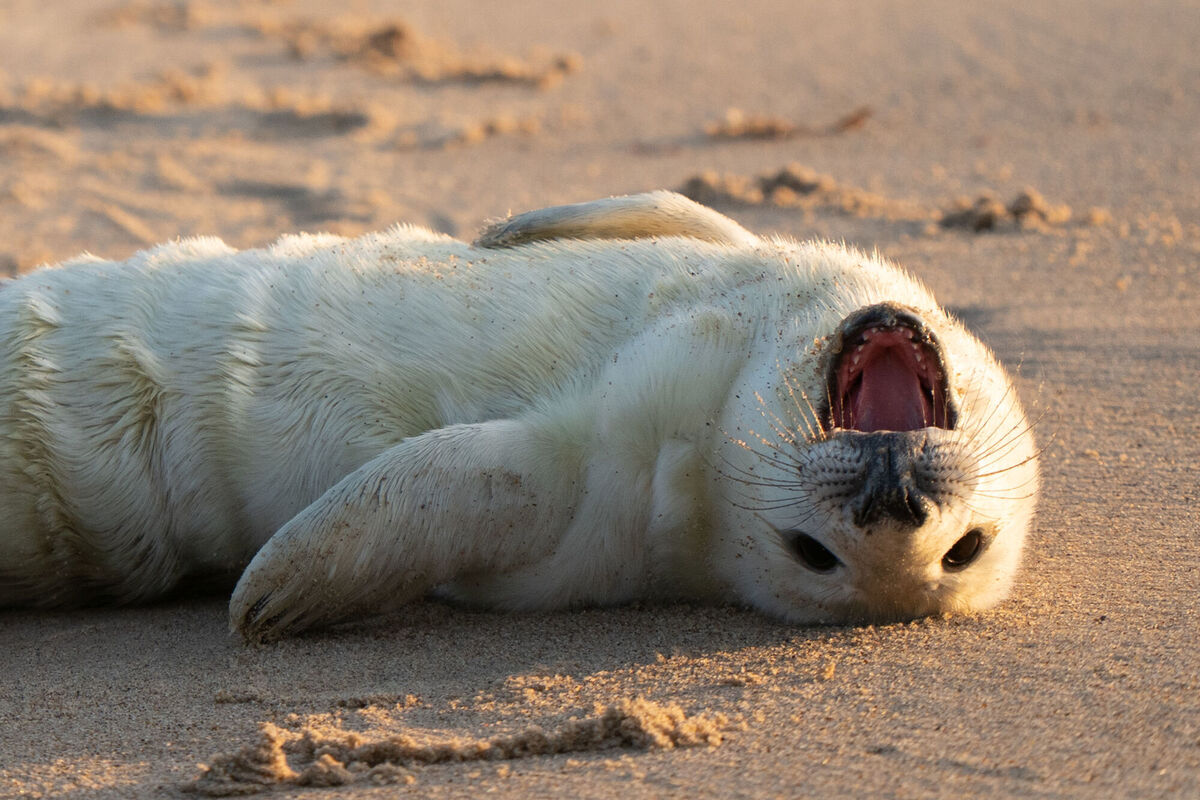
Harbour seals tend to stay close to their territory, generally staying within 20km of their haul-out site. But Grey seals travel far, often venturing more than 50 kilometres out to sea and staying there foraging for several days or weeks at a time. Some studies have tagged Grey seals with GPS devices, tracking their movements over several months. As a result we know that there are Grey seals that breed on Great Blasket Island which then swim all the way to Scotland, and back, several times a year. Their Scottish cousins come visiting here too. Those on the east and southeast coasts of Ireland travel back and forth to southwest Wales. Others from the Cork and Kerry coast seem content to venture northwards to the rugged coastlines of Galway and Mayo. There are some exceptionally adventurous individuals that make the journey to France and even all the way to the Faroe Islands out in the North Atlantic. Next time you see a seal basking on rocks or a remote beach, it could be taking a much-needed rest after an exceptionally long journey.



